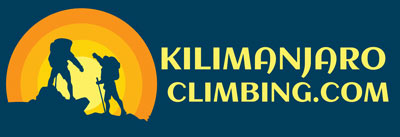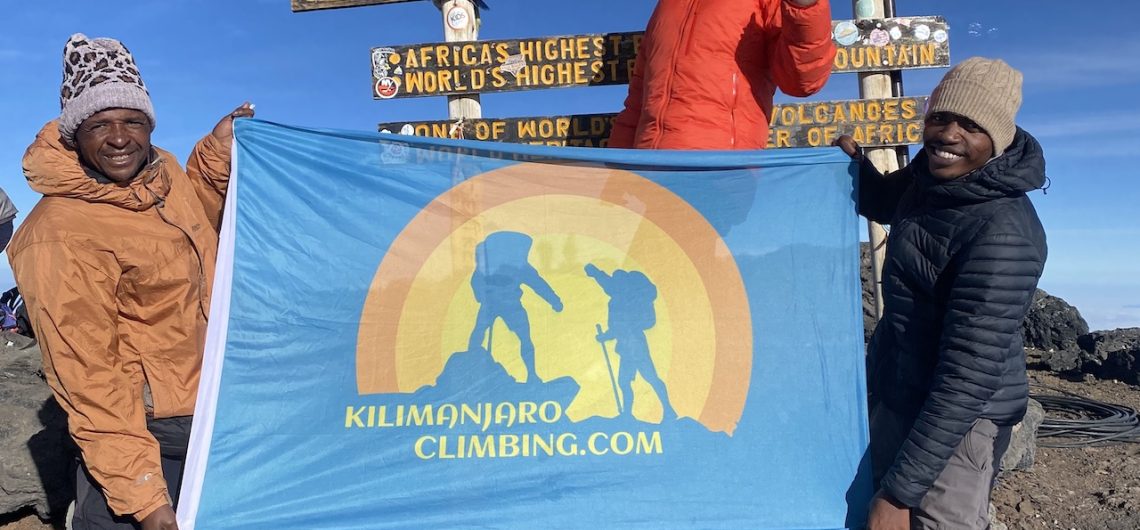If you’ve ever heard stories about people falling seriously ill from altitude sickness like I have, then you must be wondering if climbing Kilimanjaro is safe for you. Today, we’ll help you dispel those worries by showing you how safe it is to trek on the mountain.
We’ll cover the myths, risks, and precautions you need to take to ensure your safety during the trek.
But before we continue, please note that anyone can climb Mount Kilimanjaro safely as long as they follow the necessary safety precautions.
Let’s Dispel the Myths about Safety on Kilimanjaro
There are several myths that have become widespread among aspiring trekkers on Mount Kilimanjaro. These beliefs tend to convince such trekkers that climbing the mountain is dangerous.
In this section, we’ll address those myths so you have no reason to doubt the safety of Mount Kilimanjaro.
- Only extremely fit people can climb the mountain successfully
You don’t need to be a gym addict to climb Kilimanjaro and reach the summit on your first try. As long as you’re in shape, and can endure trekking for long distances, you should be able to climb to the peak without any problems. Even people who are slightly out of shape can achieve this feat, but they might take a little longer than usual.
- You need expert hiking skills to reach the summit
Due to the presence of many high-altitude routes on Kilimanjaro, a lot of people believe that only trekkers with sufficient hiking experience can climb the mountain to its summit.
But that isn’t true.
Here’s the truth: Although you need some hiking experience to complete the trek on Kilimanjaro, you don’t have to be a hiking expert. If you’ve never hiked before now, you can start training by taking a long walk everyday or running on a treadmill.
Many tour operators also incorporate acclimatization days into their itineraries to train their clients on how to deal with high altitudes. Even if you’re still a relatively new hiker, you should be able to get enough knowledge on the acclimatization day to help you take on the extreme altitudes on Kilimanjaro.
- Food on Mount Kilimanjaro is unhealthy
Many people believe that food on Mount Kilimanjaro is unhealthy because of the absence of artificial preservatives on the mountain.
Majority of the food items on Kilimanjaro are packaged foods, such as bread, jam and biscuits, which can last throughout the duration of the trek. Even when raw food like meat, eggs, and vegetables, the temperature on the mountain is low enough for them to refreeze naturally.
- There is a snow leopard on Uhuru Peak
The myth about a snow leopard on Uhuru Peak was founded on claims by Ernest Hemingway to have seen a leopard carcass close to the western summit of Kilimanjaro in his short story titled ‘The Snows of Kilimanjaro’ published in 1936. This claim was further supported by a discovery of the picture of a frozen leopard on Mount Kibo, a smaller volcano on Kilimanjaro.
The fact is that no leopard has been sighted on the mountain over several decades. Large wildlife, in general, are a rarity in Mount Kilimanjaro. Of course, there have been occasional sightings of lions on the nearby fields, and even fewer times when leopards were spotted.
You are more likely to spot smaller animals like the Galagos and the Tree Hyrax near the summit.
The Real Dangers on Mount Kilimanjaro
- Altitude sickness
About 75% of trekkers on Mount Kilimanjaro experience altitude sickness. In fact, it is the most common reason why trekkers fail to reach the summit.
Altitude sickness is a form of illness that occurs when the oxygen level in the air decreases. This illness is common on Mount Kilimanjaro because of the high altitude levels on the mountain. When altitude levels are high, air pressure falls, giving oxygen gases less chance to survive in the air.
Symptoms of Altitude Sickness
When your altitude sickness is mild, you may experience symptoms like dizziness, headache and shortness of breath. Once you start feeling this way, it’s best to stop and take a break until you feel better. If the illness progresses to nausea or an inability to walk, you’ll have to exit the mountain.
Luckily, we provide surplus guides for each group climb at Climbing Kilimanjaro, so one guide can escort sick people down the mountain, while others keep directing the rest of the trekkers to the summit.
If you don’t leave the mountain when you start noticing serious symptoms of altitude sickness, you might become discoordinated or lose your ability to breathe. In extreme cases, you may even develop brain edema, which is an accumulation of fluid in the brain.
We strongly advise against waiting until your illness deteriorates to this state. But if it does, we’ll use a stretcher to lift you out of the mountain area. We could also request a helicopter from the Kilimanjaro Search and Rescue team if the illness is severe.
How to Prevent Altitude Sickness
That said, it is better to prevent altitude sickness ahead of your trip instead of worrying about curing the illness after it happens.
You can prevent altitude sickness by:
- Engaging in cardiovascular exercises like running and squatting
- Taking constant hikes to train your body for the high altitude levels
- Avoiding drugs and alcohol
- Getting medical clearance and preventive treatment from your doctor
- Using the longer Kilimanjaro routes, as the altitude level there is relatively low
- Choosing a tour operator that includes acclimatization days in their trek options. Climbing Kilimanjaro is one of such tour operators.
At Climbing Kilimanjaro, we also help you prevent altitude sickness by providing daily medical checks during the trip and encouraging you to move slowly and drink a lot of water.
- Weather Hazards
At the foot of Mount Kilimanjaro and in surrounding towns, the weather is cool and breezy because of its closeness to the equator. But as you climb up the mountain, the temperature keeps dropping until it is obviously freezing. You’ll notice strong winds, hail and even snow as you get closer to the summit.
The freezing weather puts trekkers who are not properly dressed at risk of frostbite. If you want to avoid severe cold, frostbite and other common weather hazards on Mount Kilimanjaro, you must include the following clothing items in your Kilimanjaro trekking gear list:
- Fleece jacket
- Rain jacket
- Hiking pants
- Gloves
- Warm hats or wool beanies
- Waterproof gloves
- Hiking boots
- Moisture-wicking socks
- Thermal underwear
- Injuries
Sometimes, injuries occur when you are hiking. And since climbing Mount Kilimanjaro requires you to hike for a long time, leaving your leg strained, there’s a chance that you might get injured.
Common Injuries on Mount Kilimanjaro
Common injuries that occur on Mount Kilimanjaro are:
- Cut: Cuts are the most common injuries on the mountain, and they happen when you slip and tear your skin.
- Ankle sprain: An ankle sprain occurs when the ankle is twisted in a way that rips the ligaments holding the ankle together.
- Muscle Pull: You get a muscle pull when your muscles are overstretched. Hikers usually experience muscle pulls around the knee and hip area.
- Fracture: If you suddenly hear a small crack in your bone and feel pain, you might have a fracture. Fractures occur when your bones are overused.
- Shin splints: Feeling pain in the front or inside of your lower leg, especially around the shin area, might indicate that you have a shin splint.
At Climbing Kilimanjaro, our guides are well-trained Wilderness First Responders who are proficient in delivering emergency first aid to victims. So, if you get injured, you’ll get treated immediately.
How to Prevent Injuries on Kilimanjaro
You can prevent injuries during your climb by taking regular hikes before the trek. Wearing the right trekking footwear (hiking boots and toe socks) and using protective material (gaiters, knee braces and trekking poles) can also help you avoid injuries.
- Rock Falls
Occasionally, the rocks on the Western Breach Route on Kilimanjaro crumble and injure the tourists trekking on the route. Yet, some trekkers still take this route because it is the only road that lets you see the interior of the crater.
Due to the dangers on the Western Breach route, we strongly discourage our clients from taking the route. If you want to see the inner part of the crater, we will organize a separate crater tour for you after you’ve completed the trek on Mount Kilimanjaro.
Safety Precautions to Take as a Trekker on Mount Kilimanjaro
- Take regular hikes before trekking on Mount Kilimanjaro.
- Run on a treadmill frequently to simulate and prepare yourself for the high altitude levels on Mount Kilimanjaro.
- Request a medical checkup from your doctor to discover any underlying medical conditions, as well as medications and vaccines you need to take.
- Use Diamox pills two days before your trek, and keep using the pill until you’ve completed your trek.
- Obtain comprehensive travel insurance for your trek.
- Eat well and drink enough water throughout your trek.
- Report to your guide once you experience a headache, dizziness, or any other symptoms of altitude sickness.
- Wear hiking boots during your trek to avoid getting hurt.
- Include rain gear in your outfit, so you don’t get wet or hypothermic.
- Choose long-sleeve tops for adequate protection from the sun
- Always wash your hands before you eat.
Trek Safely on Mount Kilimanjaro with Climbing Kilimanjaro
Trekking safely on Mount Kilimanjaro requires more than taking safety precautions. You also need a guide to direct you and protect you, and someone to set up a place for you to stay during your trip.
Climbing Kilimanjaro provides experienced guides who are familiar with the length and breadth of Kilimanjaro. We can also provide you with excellent accommodation when you climb Mount Kilimanjaro.
Visit our contact page today to book your Mount Kilimanjaro trek with us.


Comments